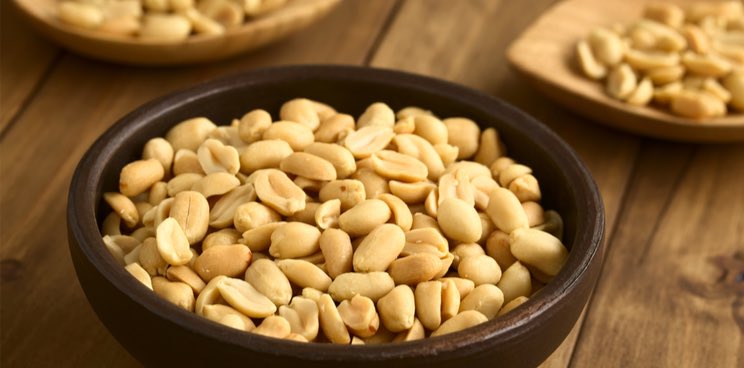Newsletter Signup - Under Article / In Page
"*" indicates required fields
Last year, the FDA rejected DBV Technologies’ peanut allergy treatment and approved that of its rival Aimmune. After recent talks with the FDA and EMA, DBV has laid out a comeback plan that could carve it a niche in the peanut allergy treatment market.
The French biotech firm DBV is coming back from a snub by the FDA of its peanut allergy skin patch, Viaskin Peanut, in August 2020. The rejection came with a demand for more testing due to concerns about patch adherence to the skin. The stall in approval was followed by DBV laying off two-thirds of its staff. It also allowed Aimmune, DBV’s biggest rival, to go unopposed in the peanut allergy treatment market with its oral treatment Palforzia, which was approved by the FDA and EMA last year.
In January this year, DBV announced plans to get Viaskin approved in the US based on feedback from the FDA. First, the firm is modifying its skin patch to address the FDA’s adherence concerns, and later this year, DBV will trial the best-performing modified patches in allergy sufferers to work towards FDA approval. If all proceeds well, Viaskin could reach the US market within the next 12 months.
Since the plans were announced, DBV’s stock price has jumped by 50%. The French company managed to successfully come back from a months-long stock dip and regain some of the market’s faith.
“We intend to advance a remediation plan for Viaskin Peanut and work closely with the FDA to review protocols and re-file our Biologics License Application as soon as possible,” stated Daniel Tassé, CEO of DBV Technologies.
Additionally, DBV revealed last month that the EMA had no questions regarding the impact of the Viaskin patch’s adhesive ability on its efficacy, and the regulatory process is ongoing. Nonetheless, the US market is still the greater prize for DBV with 2.5% of all US children being allergic to peanuts compared to around 1.6% of European children.
Aside from Aimmune’s Palforzia, there are no approved treatments available for peanut allergy. The most common experimental approaches to treating peanut allergies have been immunotherapies that gradually increase exposure to the allergen. While they have some efficacy, oral immunotherapy can come at increased risk of allergic reactions compared to avoiding peanuts.

“Peanut allergy affects approximately one million children in the US and only one out of five of these children will outgrow their allergy,” stated Peter Marks, Director of the FDA’s Center for Biologics Evaluation and Research. “Even with strict avoidance, inadvertent exposures can and do occur.”
DBV’s Viaskin skin patches gradually supply allergenic proteins to Langerhans cells, which are found in the skin. According to preclinical research, these cells can capture peanut allergens and activate regulatory T cells to down-regulate the reaction to the allergen.
While it has been slower to reach the market, Viaskin may have several advantages over Palforzia, which is a relatively traditional oral immunotherapy. Palforzia requires multiple visits to the allergist for the dose escalations and a daily maintenance dose to maintain immunity. While the Viaskin patch does require daily use, the dose does not require escalation and has a lower risk of allergic reactions.
Additionally, while DBV is behind Aimmune in terms of getting its peanut allergy treatment to the market, there are still unique obstacles for Aimmune.
“Being a first mover is usually a good point to capture the largest market share,” said Bertrand Delsuc, CEO and founder of the business intelligence firm Biotech Radar. “Though it seems pretty clear that the peanut allergy market is an uncharted territory, commercially speaking, since there was no FDA-approved therapy in the US until Palforzia. So Aimmune, in the absence of any competitor, would also have to build the awareness alone.”
Aimmune suffered from slow sales of Palforzia in the first half of 2020, indicating that the drug is still gaining traction in a world gripped by a pandemic. However, Nestlé Health gave Aimmune a vote of confidence when it acquired the company for €2.2B ($2.6B) eight months after Palforzia’s approval.
Viaskin Peanut is DBV’s only clinical candidate that has made it past phase III. The company has €160 million in cash, has burned over €126 million per year for the past four years, and is likely still 12 months out from final FDA approval. Assuming this same burn rate, DBV will likely be able to bring Viaskin to market without breaking the bank.
The fight for the market includes small companies like the UK firm CamAllergy and US biotech Intrommune as well. CamAllergy is preparing for a phase III clinical trial of its oral immunotherapy and Intrommune received clearance from the FDA to begin clinical testing in February of this year. The allergy treatment space is growing radically and will produce a variety of products to solve a problem that can range from inconvenient to deadly.

Eduardo Longoria began his career in biotechnology while studying Biology and Business at UT Austin. He is currently researching biosensors for SARS-CoV-2 as part of his Master’s degree program at UFPR. As part of his love of biomanufacturing, he is a co-founder of a company that produces chitosan for research purposes.
Cover image from Anastasiia Slynko. Body text image from Shutterstock.






